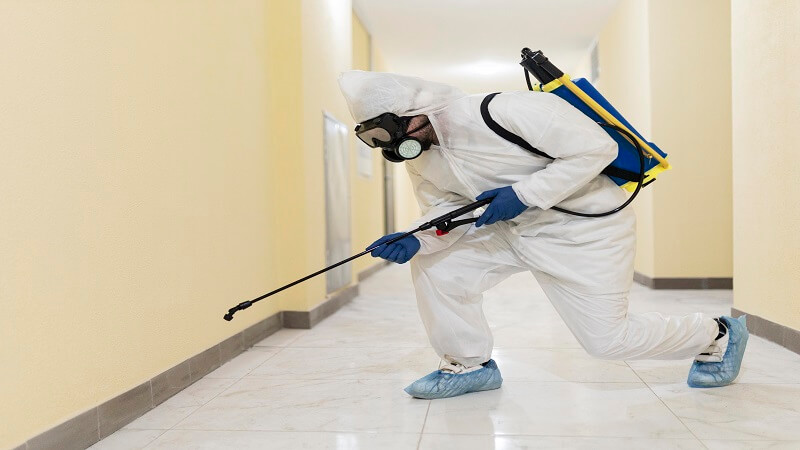There’s nothing like the creepy sight of ants in your kitchen, a spider in the shower, or the ominous sound of mice rustling in the walls to remind you that pests don’t need an invitation to make themselves at home. From mild annoyances to serious health risks, household pests can cause everything from property damage to sleepless nights.
The good news? You don’t have to wait for an infestation to take action.
The secret to a pest-free home lies in proactive planning and preventive pest control.
In this guide, we’ll walk you through exactly how to get rid of pests—and better yet—how to stop them from coming back in the first place.
Understand What You’re Up Against
Before you launch your defense, it helps to know your enemy.
Common household pests include ants, cockroaches, termites, mice, rats, spiders, and mosquitoes—each with its behavior and vulnerabilities. Some pests are just seasonal, while others can thrive all year if given food, water, and shelter.
Identifying the specific pests in your home is the first step to removing them effectively. Look for signs like droppings, chew marks, nesting materials, musty odors, or insect trails.
Different pests require different treatment methods, so knowing what you’re dealing with will help you choose the right solution.
Block Their Entry Points
The easiest way to deal with pests is never to let them in. Here are practical steps to seal off your home and make it less inviting:
- Inspect doors and windows: Replace torn screens and apply weather stripping.
- Seal cracks and crevices: Use caulk or steel wool to close gaps around pipes, vents, and foundation.
- Repair roof damage: Loose shingles and damaged gutters can allow insects or rodents to enter.
- Install door sweeps: Keep out crawling insects like roaches and ants.
- Check for utility gaps: Where cables and wires enter your home can be a major access point for pests.
Taking the time to secure your home physically is a crucial component of long-term pest prevention.
Eliminate Food and Water Sources
Pests don’t just show up randomly—they’re following the scent of food, water, or warmth. By cutting off these essentials, you make your home far less attractive to unwanted guests.
- Store food in airtight containers, clean crumbs and spills promptly, and avoid leaving pet food out.
- Regularly take out the trash, and make sure garbage bins have tight-fitting lids.
- Fix leaky pipes and faucets to eliminate moisture, especially under sinks or in basements.
Even small puddles or drips can serve as hydration stations for bugs and rodents. Remember, pests are survivors—if you cut off their resources, they’ll find somewhere else to go.
Clean Like You Mean It
A clean home isn’t just good for your health—it’s your first line of defense against pests. Regular cleaning eliminates crumbs, grease, and other residues that attract insects and rodents. Vacuum often, especially along baseboards and under furniture.
- Keep kitchen counters and stovetops free of grease buildup.
- Wipe down pet bowls, and clean up spills immediately.
Don’t forget overlooked areas like your pantry, laundry room, and garbage disposal. Pests love clutter too—so decluttering and organizing storage areas helps eliminate nesting spots for mice, spiders, and bugs. If your home is clean and dry, it’s far less likely to become a target.
Take the Offensive with Pests in Your Home
Waiting for pests to invade before doing something about it puts you in constant reaction mode. Instead, switch to a proactive approach using pest control strategies.
You must keep applying perimeter treatments around your home’s foundation, using bait stations or traps in key areas, and maintaining a regular inspection schedule.
Natural repellents like essential oils (peppermint, eucalyptus, and tea tree) can deter certain insects, while diatomaceous earth or boric acid may help with crawling pests like roaches.
Professional pest control services also offer monthly or quarterly programs that monitor your home, apply treatments, and make adjustments before infestations occur. With a preventive mindset, pest control becomes part of your routine, just like cleaning or mowing the lawn.
Pest-Safe Landscaping Practices
Your yard is the first line of defense before pests ever make it indoors. Here are landscaping tips to keep bugs and rodents at bay:
- Trim shrubs and tree branches: Keep them at least a foot away from the house.
- Remove standing water: Mosquitoes breed in stagnant pools, so clean gutters and birdbaths regularly.
- Use mulch carefully: Thick mulch beds can harbor pests—use gravel or rubber mulch near the home instead.
- Secure compost bins: Rodents love easy access to food scraps.
- Keep firewood elevated: Store it at least 20 feet from your home to prevent termites.
Smart outdoor maintenance goes hand-in-hand with indoor pest control strategies.
Call in the Professionals When Needed
Some pest problems are just too stubborn, widespread, or hazardous to handle on your own. Infestations involving termites, bed bugs, or rats require specialized tools and techniques. If you’ve tried everything and still see signs of pests—or if the problem seems to be getting worse—don’t hesitate to contact a licensed pest control provider.
They can perform detailed inspections, identify hidden problems, and use targeted treatments to get your home back under control.
Most companies offer customized plans depending on your needs and even include follow-ups to ensure long-term protection. Think of it as a health checkup for your home: sometimes, expert attention is exactly what’s needed to restore balance.
Be Consistent and Stay Ahead
The key to keeping your home pest-free isn’t a one-time solution—it’s consistency. Just like brushing your teeth or locking your doors at night, pest prevention should be part of your routine. Schedule seasonal inspections, rotate repellents, refresh bait stations, and stay alert to changes in your environment.
Make small adjustments based on what you observe.
For example, more ants in summer? Increase sealing and reduce moisture. Mice in winter? Add insulation and traps in storage areas. The better you know your home and the way pests interact with it, the more effective your prevention efforts will be.
A Pest-Free Home Starts with the Right Steps
Living in a clean, comfortable, and pest-free home doesn’t have to be a dream—it just takes intention and follow-through. By sealing entry points, removing food sources, keeping your home clean, and embracing consistent preventive pest control practices, you’ll be ready to block unwanted visitors before they even knock.
Whether you’re tackling the issue yourself or working with professionals, a proactive approach gives you peace of mind—and a much more enjoyable living space.
Remember, the best time to deal with pests is before they ever appear.
*Sponsored Blog Post

